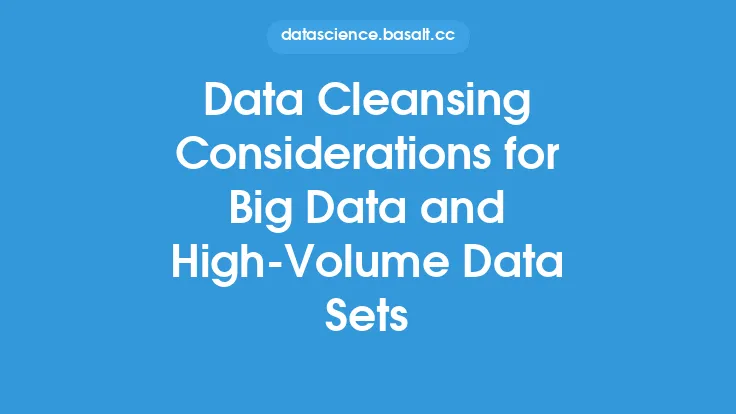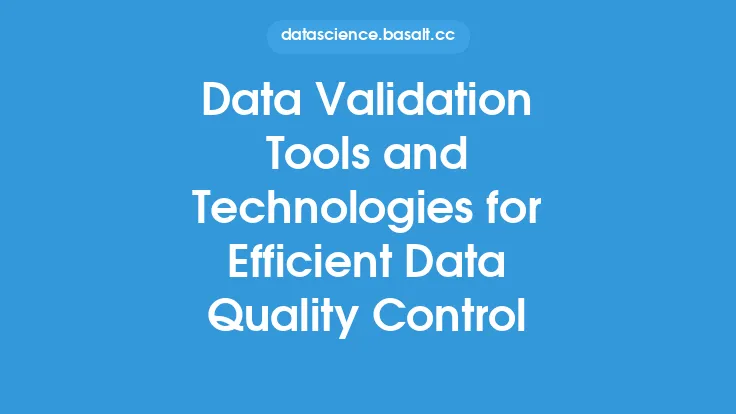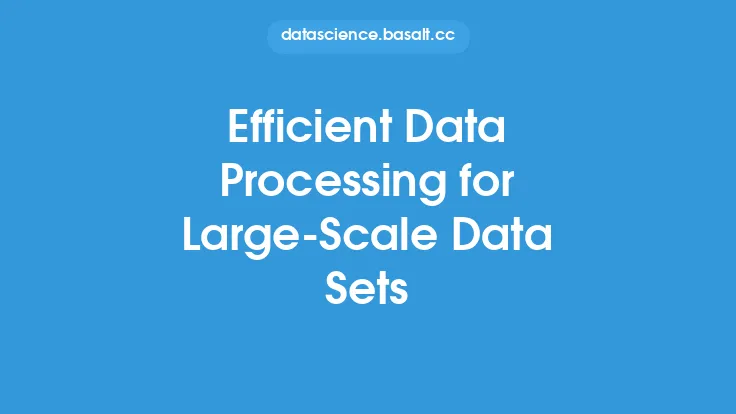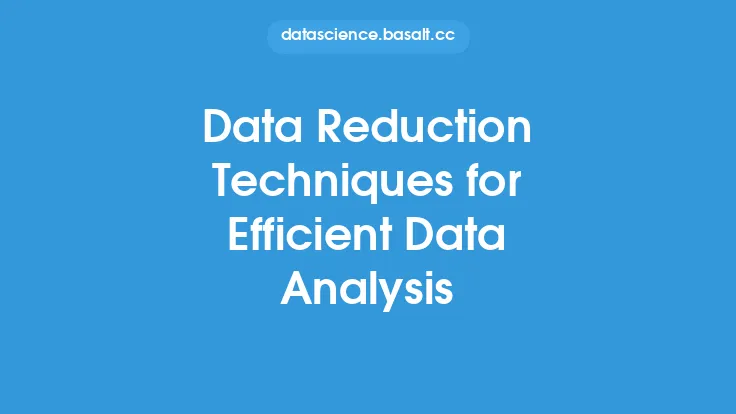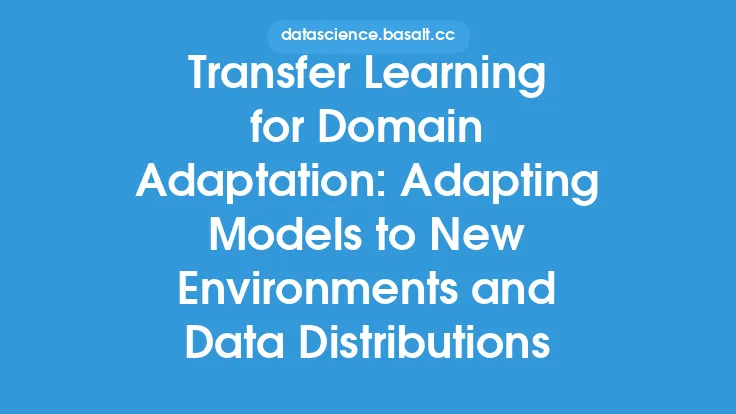The process of data cleansing is a crucial step in ensuring the quality and reliability of data used for analysis and decision-making. As the volume and complexity of data continue to grow, manual data cleansing methods are becoming increasingly inefficient and prone to errors. Automating data cleansing tasks can help organizations streamline their data processing and analysis workflows, reduce costs, and improve overall data quality. In this article, we will explore the benefits and techniques of automating data cleansing tasks, as well as the tools and technologies used to support this process.
Introduction to Automated Data Cleansing
Automated data cleansing involves using software tools and algorithms to identify, correct, and transform data errors and inconsistencies. This can include tasks such as data validation, data normalization, data transformation, and data quality checking. Automated data cleansing can be applied to various types of data, including structured, semi-structured, and unstructured data. The goal of automated data cleansing is to produce high-quality data that is accurate, complete, and consistent, and can be used for analysis, reporting, and decision-making.
Benefits of Automated Data Cleansing
Automating data cleansing tasks offers several benefits, including improved data quality, increased efficiency, and reduced costs. Manual data cleansing methods can be time-consuming and prone to errors, which can lead to poor data quality and inaccurate analysis. Automated data cleansing can help reduce the risk of human error and ensure that data is consistent and accurate. Additionally, automated data cleansing can help organizations process large volumes of data quickly and efficiently, which can be particularly useful for big data and high-volume data sets.
Techniques for Automated Data Cleansing
There are several techniques used in automated data cleansing, including data profiling, data validation, data normalization, and data transformation. Data profiling involves analyzing data to identify patterns, trends, and anomalies. Data validation involves checking data against a set of rules or constraints to ensure that it is accurate and complete. Data normalization involves transforming data into a standard format to ensure consistency and comparability. Data transformation involves converting data from one format to another to support analysis and reporting.
Tools and Technologies for Automated Data Cleansing
There are several tools and technologies used to support automated data cleansing, including data quality software, data integration tools, and data governance platforms. Data quality software provides a range of features and functions for data profiling, data validation, data normalization, and data transformation. Data integration tools provide the ability to extract, transform, and load (ETL) data from multiple sources. Data governance platforms provide a framework for managing data quality, data security, and data compliance.
Data Quality Software for Automated Data Cleansing
Data quality software is a critical component of automated data cleansing. This type of software provides a range of features and functions for data profiling, data validation, data normalization, and data transformation. Some popular data quality software includes Trifacta, Talend, and Informatica. These tools provide the ability to connect to multiple data sources, profile and analyze data, and apply data quality rules and transformations.
Data Integration Tools for Automated Data Cleansing
Data integration tools are used to extract, transform, and load (ETL) data from multiple sources. These tools provide the ability to connect to various data sources, transform data into a standard format, and load it into a target system. Some popular data integration tools include Microsoft SQL Server Integration Services (SSIS), Oracle Data Integrator (ODI), and IBM InfoSphere DataStage. These tools provide the ability to design, develop, and deploy data integration workflows that support automated data cleansing.
Data Governance Platforms for Automated Data Cleansing
Data governance platforms provide a framework for managing data quality, data security, and data compliance. These platforms provide a range of features and functions for data discovery, data classification, data quality monitoring, and data remediation. Some popular data governance platforms include Collibra, Informatica, and IBM InfoSphere Information Governance. These tools provide the ability to discover and classify data, monitor data quality, and remediate data errors and inconsistencies.
Best Practices for Implementing Automated Data Cleansing
Implementing automated data cleansing requires careful planning, design, and deployment. Some best practices for implementing automated data cleansing include defining data quality rules and standards, designing data integration workflows, and testing and validating data quality. It is also important to monitor and maintain data quality over time, and to continuously improve and refine automated data cleansing processes.
Challenges and Limitations of Automated Data Cleansing
While automated data cleansing offers several benefits, there are also challenges and limitations to consider. One of the main challenges is ensuring that automated data cleansing processes are accurate and reliable. This requires careful design, testing, and validation of data quality rules and transformations. Another challenge is handling complex and nuanced data errors and inconsistencies, which may require manual intervention and review. Additionally, automated data cleansing may not be suitable for all types of data, particularly unstructured or semi-structured data, which may require specialized tools and techniques.
Future Directions for Automated Data Cleansing
The future of automated data cleansing is likely to involve increased use of artificial intelligence (AI) and machine learning (ML) techniques. These technologies can be used to improve the accuracy and efficiency of automated data cleansing, and to handle complex and nuanced data errors and inconsistencies. Additionally, there is likely to be increased focus on real-time data quality monitoring and remediation, as well as greater emphasis on data governance and compliance. As data volumes and complexity continue to grow, automated data cleansing is likely to play an increasingly important role in ensuring the quality and reliability of data used for analysis and decision-making.
